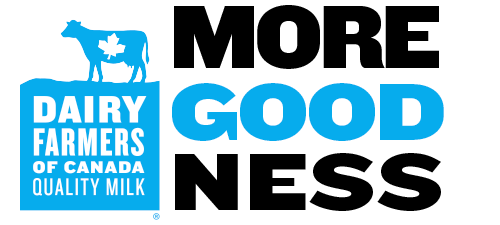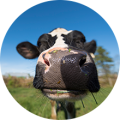
A Day in the Life of a Canadian Dairy Cow
It only takes a few minutes to milk a dairy cow – so how do they spend the rest of their day? The answer involves a lot of chewing – and resting, and even a bit of socializing. How much time for each? It may depend on her personality! Read on to find out more about a typical day in the life of a Canadian dairy cow.
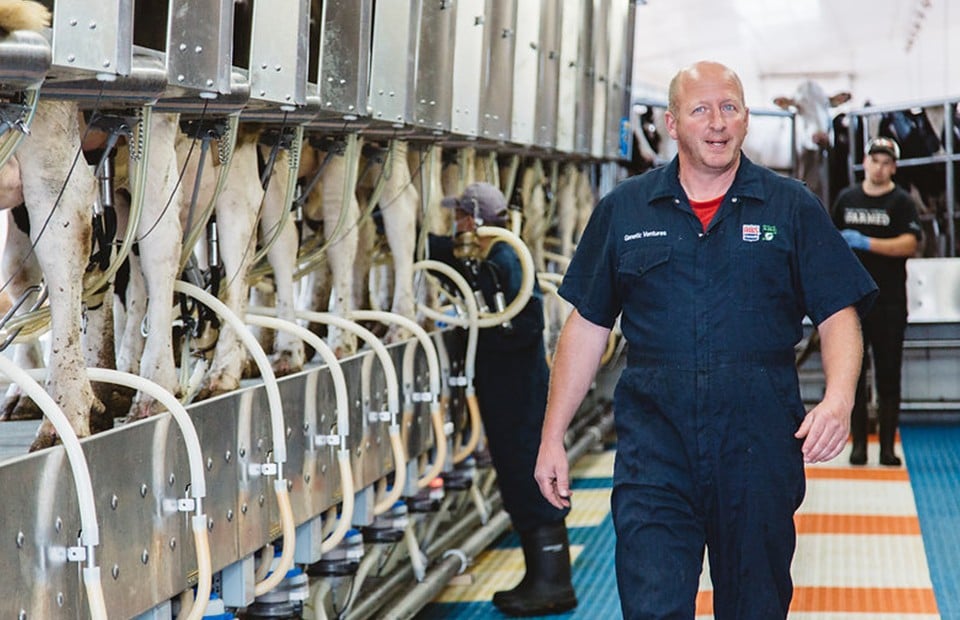
Milking : Less than 1 hour
Using modern milking systems, it takes about 5-10 minutes to milk a cow. And cows are typically milked twice a day – once in the early morning, and again about 12 hours later. Some cows prefer to be milked more often when given the choice in a robotic setting. Milking a cow the old-fashioned way – by hand – would have taken a bit longer, about 20-30 minutes.
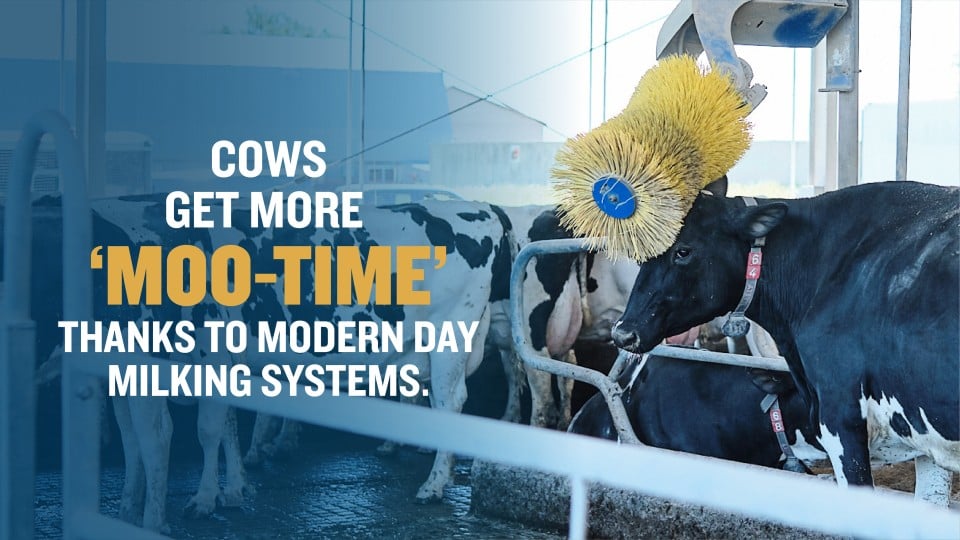
It also takes a minute to prepare a cow for milking, as every cow is individually cleaned and inspected, every time. And depending on the farm's setup, cows may have to wait their turn to be milked. On farms with robotic milking systems, cows can self-serve, meaning they can get milked whenever they want. Barns with milking parlours allow for many cows to be milked at regular times. And in a tie-stall barn, farmers move a number of milkers between cows.
So how do cows spend the rest of the day?
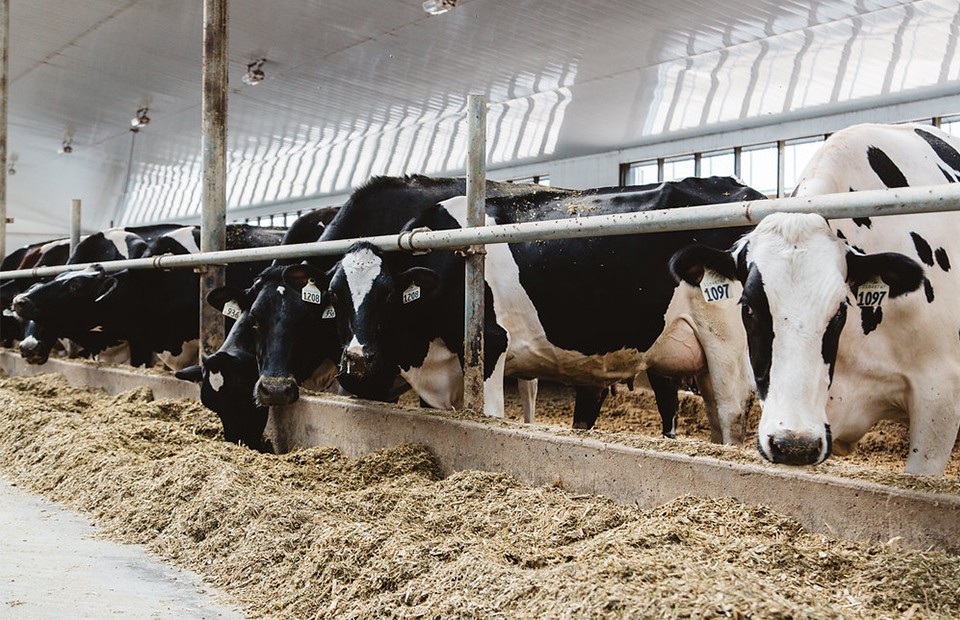
Feeding: 4 to 7 hours
Cows are natural grazers, preferring to eat 5 to 9 meals a day, plus drinking. For this reason, cows have free access to fresh food and water throughout the day.
As ruminants, cows also spend a lot of time chewing and digesting their food – and most of this rumination time is in addition to the feeding time. So while individual cows' behaviour and preferences vary greatly, the time spent feeding and ruminating usually adds up to 4-7 hours a day.(1)
So just how much does a cow eat? While each cow is different, a typical milk-producing dairy cow, weighing around 600kg, eats around 29kg of feed each day and may drink about 100L of water (about a bathtub's worth). A cow of this size will produce around 20–40L of milk per day.
The next question, naturally, is what do cows eat? The short answer is that dairy cows' feed usually consists of a mixture of the farm’s own grass (fresh, silage or dry) and crops such as corn, oats, or barley, to which essential vitamins or minerals may be added. Learn more about the diet of a Canadian dairy cow.

Resting: 10-12 hours
On average, cows usually spend around 10-12 hours a day lying down (2) – although they get up and down regularly during this time, regardless of the type of barn. But they're not just resting: as ruminants, they're also chewing and digesting their food multiple times (when you have four stomachs, it's a process!)
Cows also use this time to socialize with others in the herd. Canadian researchers have observed that calves create bonds with each other, and that friendship with their companions may be long lasting (3). Like most herd animals, cows also have a status in the herd: some are more bossy, some are more timid, and farmers and herdspeople are well aware of the personality traits of each cow.

Sleeping : 4 hours
With all that time spent resting and lying down, this girl doesn’t need much beauty sleep! Cows naturally sleep for a total of 4 hours a day – and no, they don't really sleep standing up (but you knew that, right?) In fact, some cows are known to sleep curled up, with their head on their belly, while others sleep sprawled out.
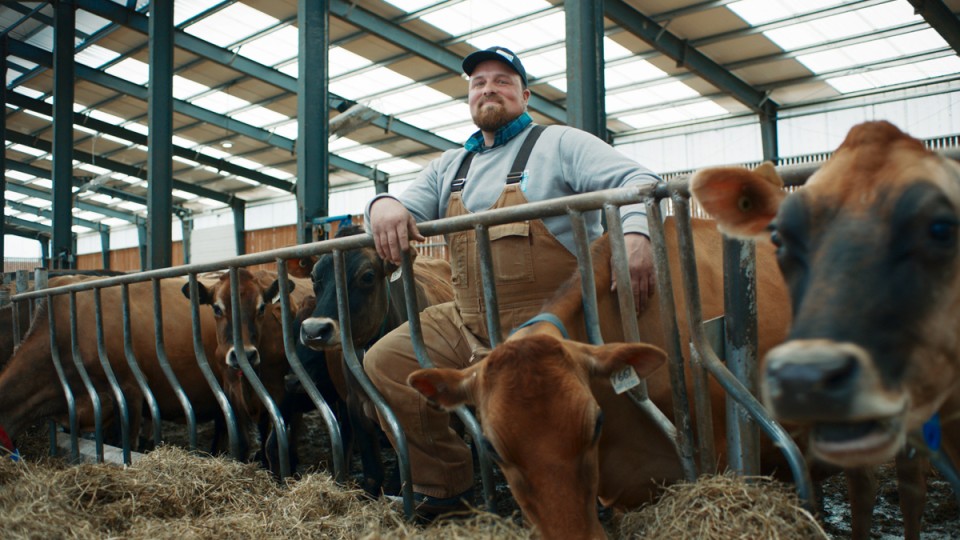
Inspection & Care
In addition to their regular routines, cows are looked after and cared for throughout the day – and sometimes through the night – to ensure their needs are met. Between milking, feeding, stall cleaning, and other activities, every cow is checked on by the farmer or other farm workers multiple times every day.
Farm workers ensure their comfort, and look for any changes in behaviour that may be warning signs of illness or stress.
A year in the life of a dairy cow
This typical day is that of a lactating cow. After giving birth to a calf, the cow starts her lactation, which will last about 10 months. The amount of milk she gives increases gradually during the first three months and then slows down gradually. The lactation is stopped two months before a new calf is born. During these two months, the cow directs all her energy to the last trimester of the calf developing inside her. Once the calf is born, a new lactation starts.
Sources
1. Ontario Ministry of Agriculture, Food and Rural Affairs. “Dairy Cows Need to Allocate Time.” http://www.omafra.gov.on.ca/english/livestock/dairy/facts/allocatetime.htm (accessed on October 25 2021)
2. Journal of Dairy Science. "Lying time and the welfare of dairy cows". Volume 104, Issue 1, January 2021. https://www.sciencedirect.com/science/article/pii/S0022030220308857
3. Group housing and milk feeding of dairy calves. Proceedings of the 2013 Western Canadian Dairy Seminar. Vol. 25 2013.
https://wcds.ualberta.ca/wcds/wp-content/uploads/sites/57/wcds_archive/Archive/2013/Manuscripts/p%20179%20-%20192%20Jensen.pdf




